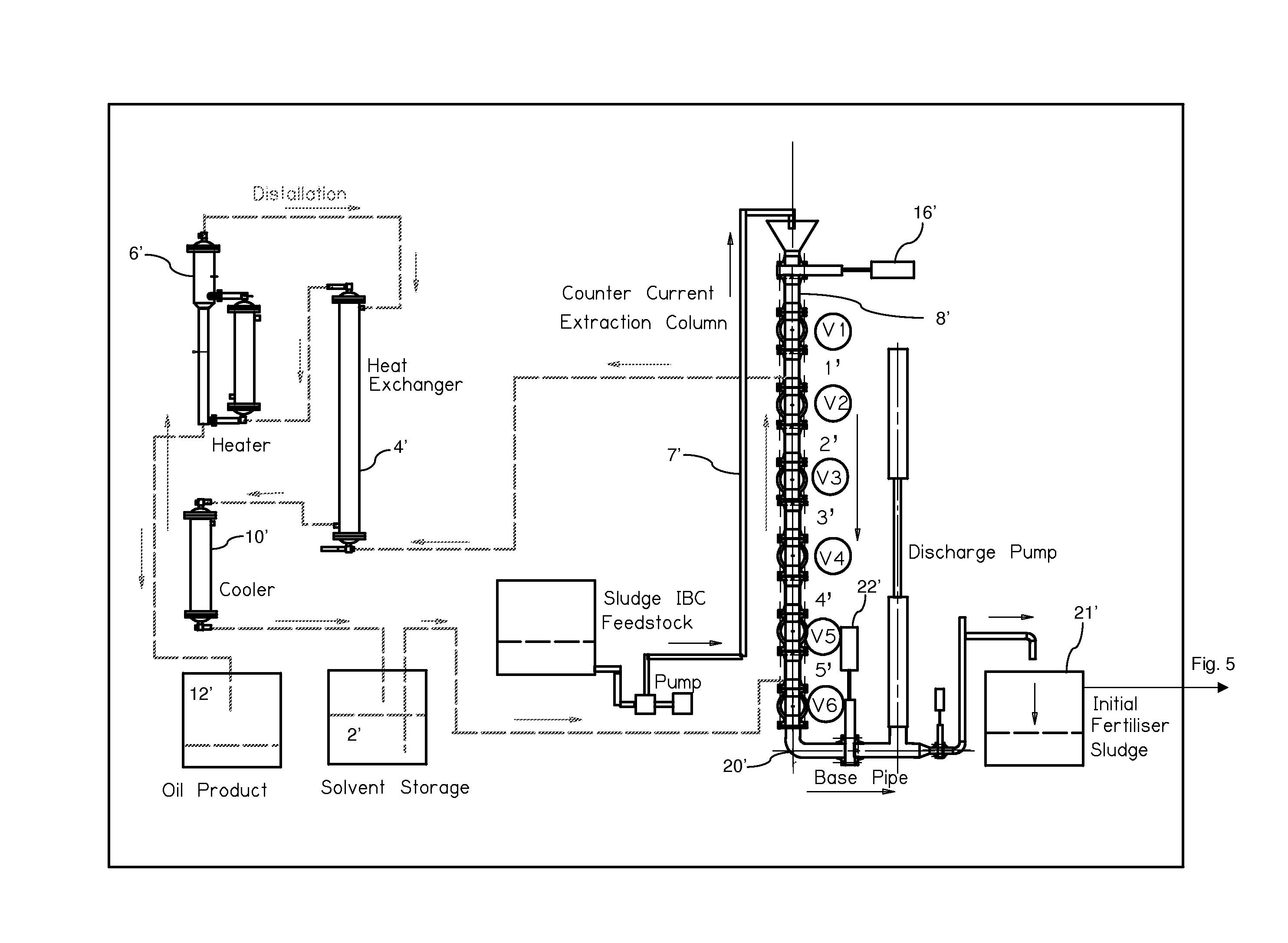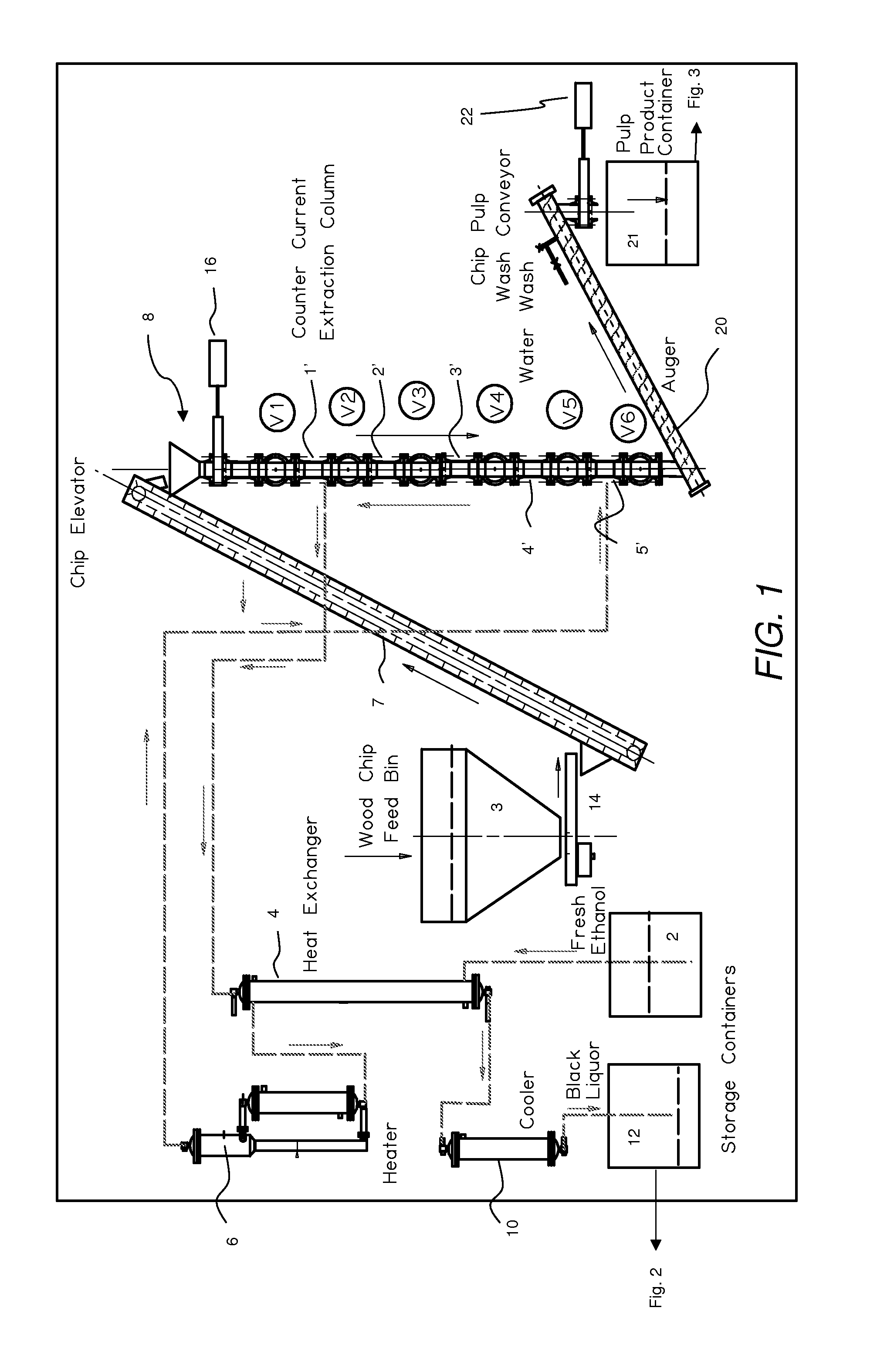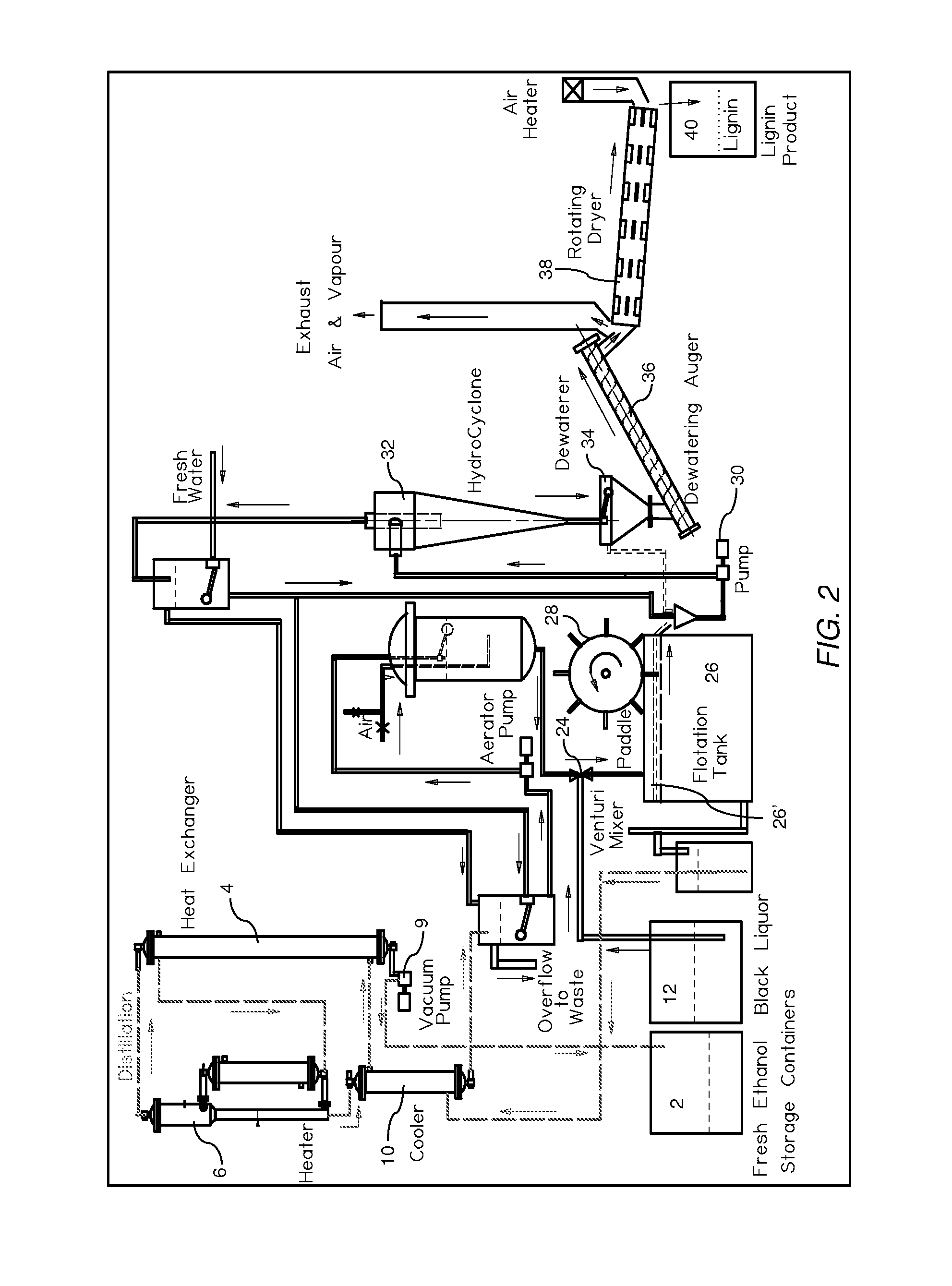Methods and systems for processing plants and converting cellulosic residue to crude bio-oils
a technology of cellulosic residue and processing plant, which is applied in the direction of positive displacement liquid engine, fluid pressure control, instruments, etc., can solve the problems of limited high-value product yield, high waste generation, and high processing cos
- Summary
- Abstract
- Description
- Claims
- Application Information
AI Technical Summary
Benefits of technology
Problems solved by technology
Method used
Image
Examples
example # 1
Example #1
[0095]This example illustrates a trial for the conversion of cellulose (from woodchips) into crude oil using a super critical water reactor (SCWR), such as that described above. Additionally the trial included the conversion of waste printer toner into oil as a separate experiment. This example is provided for illustrative purposes only and is not intended to limit the scope of the invention.
[0096]Batch Preparation: Initially a batch named W1 was prepared from the following recipes as shown below in Table 1.
TABLE 1Recipe of Batch W1 productionRecipeQuantityUnitsWater200LHydroxy Ethyl Cellulose (HEC)4kgWood chips25KgSodium hydroxide (NaOH)0.5Kg
[0097]The addition of NaOH thickened the mixture into a light gel. Batch W1 was then separated into two 100 L batches. Half of batch W1 was processed in the SCWR. However, 50 L of additional water was added into the 100 L batch to reduce its viscosity.
[0098]This brought the total volume of the mixture to 150 L. The other half was mixe...
PUM
| Property | Measurement | Unit |
|---|---|---|
| pressure | aaaaa | aaaaa |
| temperature | aaaaa | aaaaa |
| pressure | aaaaa | aaaaa |
Abstract
Description
Claims
Application Information
 Login to View More
Login to View More - R&D Engineer
- R&D Manager
- IP Professional
- Industry Leading Data Capabilities
- Powerful AI technology
- Patent DNA Extraction
Browse by: Latest US Patents, China's latest patents, Technical Efficacy Thesaurus, Application Domain, Technology Topic, Popular Technical Reports.
© 2024 PatSnap. All rights reserved.Legal|Privacy policy|Modern Slavery Act Transparency Statement|Sitemap|About US| Contact US: help@patsnap.com










